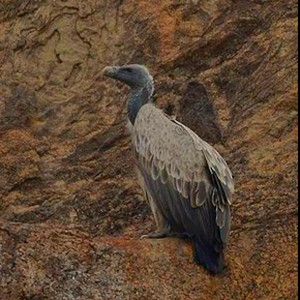
Vanishing Vultures
Nature’s Scavengers
Perhaps you have noticed that at present there are considerably less vultures in our skies than there were a few years back.
In the early eighties, there were about 40 million vultures in India. The Oriental white-backed vulture was so abundant in India, that it was probably the most common large bird of prey in the world.
The vulture population has declined…….. by more than 97%……. in the last few years and their numbers are decreasing at an alarming rate.
Vultures endangered
Of the nine species of vultures found in India, three species – the white-backed, long-billed and slender-billed vultures have been categorised by the International Union for the Conservation of Nature as critically endangered.
These three species are also listed in Schedule I species in the Indian Wildlife (Protection) Act, 1972, along with the tiger and one-horned rhino.
A survey by the Bombay Natural History Society in 2007 estimated that there were about:
- 1000 slender-billed vultures,
- 11,000 white-backed vultures, and
- 44,000 long-billed vultures in the country.
Reasons for the decline
The main reasons for the decline in vulture population in the entire South and Southeast Asia are:
- Rapid urbanization which has caused habitat destruction – felling of the high-rise trees, where the vultures nest;
- Aeroplanes and other moving objects in the sky;
- Electric power lines;
- Rampant use of pesticides like DDT, and to a great extent diclofenac.
Diclofenac
Many experts believe that the drug diclofenac is the main culprit for the decline of vultures in India.
India introduced the diclofenac in 1993. The Bombay Natural History Society (BNHS) has been campaigning against diclofenac since 2003 because diclofenac, which is used to treat cattle, is toxic to any vulture that feeds on the carcass of recently treated cattle.
In 2006, the Government of India banned the manufacture and import of diclofenac – but only for veterinary purposes. Nepal and Pakistan followed the ban.
In 2008, the Government of India placed more stringent restrictions on diclofenac for animal use, making contravention punishable with imprisonment.
But diclofenac, which continues to be legally used and sold for humans, is available across the counter in most medicine shops, and is illegally used for animals.
Dr. Vibhu Prakash, the principal scientist for the vulture conservation breeding programme at BNHS, Mumbai found that, over 75% of vultures which were discovered dead or died of visceral gout had diclofenac in their tissues.
http://www.rspb.org.uk/supporting/campaigns/vultures/
The Indian Veterinary Research Institute also conducted tests and detected heavy content of diclofenac, in samples of dead vultures.
Diet of the vultures
Vultures usually feed on carcasses of livestock and wildlife.
They do not hunt living animals, though sometimes, they attack and kill wounded or sick animals.
A mature vulture eats almost half a kg meat everyday. Vultures detect dead animals faster than any other animal, and follow migrating predators and other large animals feeding on the dead and help in keeping the environment clean.
Captive Breeding
The BNHS advocated the captive breeding of vultures as the only viable option to save the creatures
“By bringing some vultures in captivity, the life of these vultures is saved and once they start breeding, they would augment their population. The vultures will be released back in the wild once we are sure that there is no diclofenac available in system,”
The Govt. of India permitted BNHS to run three vulture conservation breeding centres at Pinjore of Haryana, Rajabhatkhawa of West Bengal and Rani of Assam. BNHS is supported by a number of international organizations like the Royal Society for the Protection of Birds (UK), Zoological Society of London , Peregrine Fund (US), and the newly-formed consortium Saving Asia’s Vultures from Extinction (SAVE).
(There are conservation breeding centres linked to the SAVE programme also in Nepal and Pakistan.)
The three conservation breeding centres in India have 271 vultures. And they have successfully bred of all the three endangered species.
2011 has been the most successful year for the Indian captive breeding centres.
The number of fledged chicks is almost double than last year’s.
Eighteen vulture chicks were successfully reared, 15 at the Pinjore centre in Haryana, and the remaining three at Rajabhat Khawa in West Bengal.
Four fledged birds were a direct result of ‘double clutches’: some pairs produced a second egg after the first was removed, hatched in incubators and reared by BNHS staff.
Some experts are against captive breeding of vultures. But the three breeding centres are making very good progress.
An exclusive sanctuary for the Vultures
The Tamil Nadu Government is now examining a proposal to set up a home for vultures in the Sigur Plateau in the Nilgiris. This would be the first of its kind in the country.
Why should we be concerned about vultures
About a year back, I saw a large group of vultures flying over the Fort in Jodhpur. Someone explained that this place was one of the biggest nesting and breeding places of these vultures.
Why should we be concerned about vultures?
For one, they are nature’s scavengers.
There are other scavengers, but they are not as efficient as the vultures. The vultures are usually the first to detect dead carcasses and others follow them. Besides they carry a host of diseases like rabies, which can easily be transmitted to humans.
Love them or hate them, vultures are uniquely adapted scavengers and their loss would have numerous negative repercussions for other species inhabiting our planet, including us.
http://blogs.peregrinefund.org/pages/article.php?eid=683

